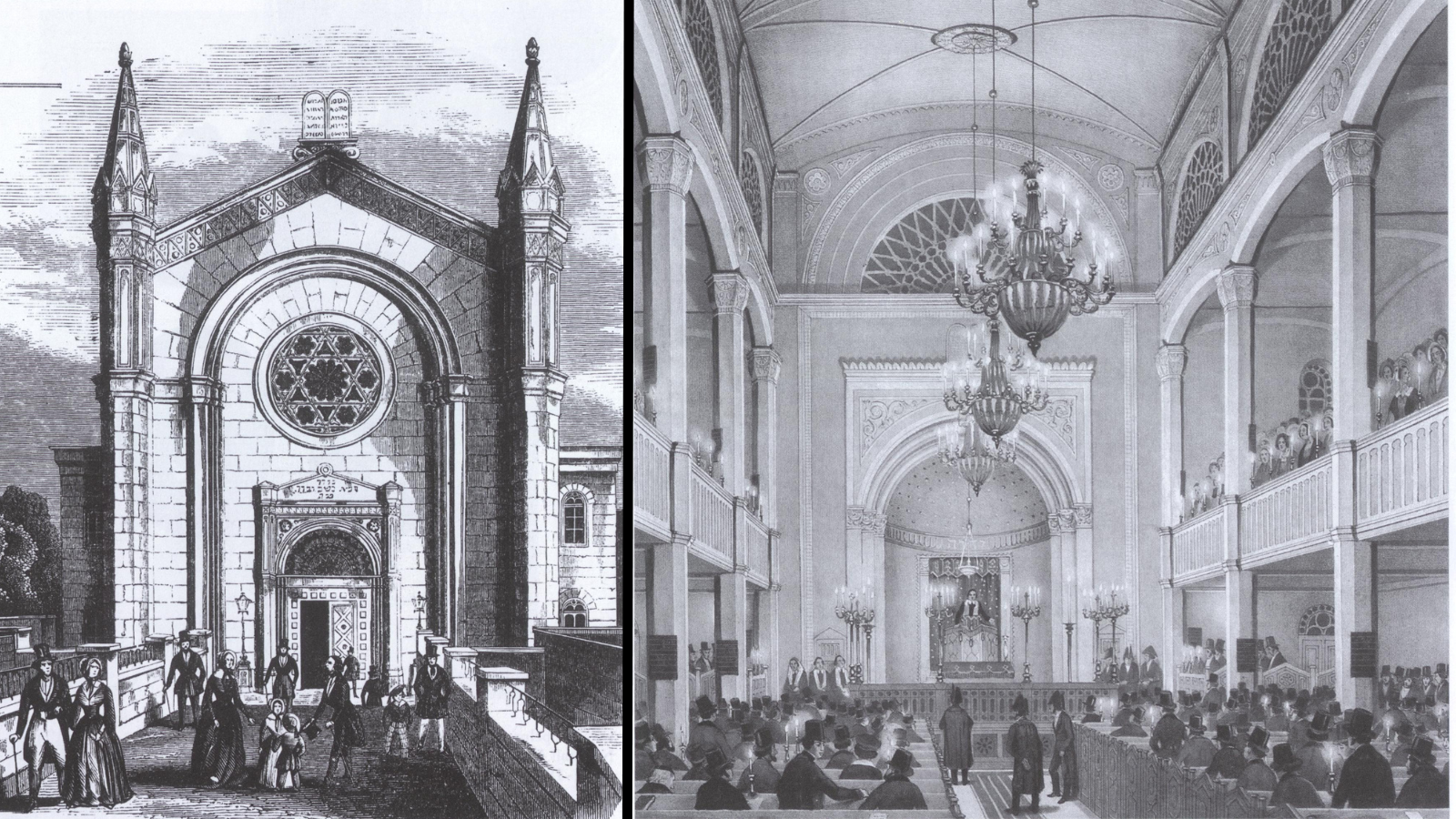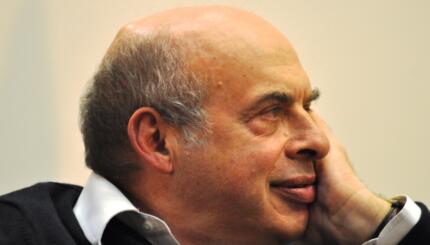Reform Judaism is the largest of the three main American Jewish denominations.
The movement’s principal North American organization, the Union for Reform Judaism, has roughly 900 member congregations and 1.5 million adherents, and is an affiliate of the international arm of Reform Judaism, the World Union for Progressive Judaism, based in Jerusalem. The URJ operates rabbinical seminaries in four cities (three in the U.S. and Jerusalem), a network of 16 North American summer camps, an advocacy arm in Washington, D.C., and a national youth group.
Internationally, the movement is much smaller, encompassing only about 40 communities in Israel and about twice that number in England. Smaller numbers of Reform communities are found in a handful of other European countries.
The movement, which was established in Germany in the mid-19th century, was born of an attempt to reconcile Judaism with contemporary life and harmonize it with emerging currents in Western thought. The movement is politically liberal, egalitarian on gender issues, active in interfaith efforts and religiously progressive — accepting patrilineal descent and ordaining women and gays as rabbis, among other innovations. Historically, it has emphasized the ethical aspects of Jewish tradition over its ritual requirements, though in recent decades it has begun to re-embrace some of the religious practices it once dismissed.
With your help, My Jewish Learning can provide endless opportunities for learning, connection and discovery.
Origins in Germany
The backdrop to the movement’s emergence was the Emancipation, the process begun in late 18th century to grant European Jews equal rights and eliminate the legal barriers that had impeded their social and economic progress for centuries. The emergence from the European ghetto had an enormous impact on the practice of Judaism, leading some Jews to abandon long-observed religious practices in an effort to assimilate more easily into the broader culture.
“Eager to participate and demonstrate to their neighbors what loyal and productive citizens they could be, many Jews decided to jettison kashrut [Jewish dietary laws] and other traditional laws and practices which prohibited them from eating at the homes of their gentile friends or attending social gatherings at cafés,” the Reform Rabbi Lawrence Englander has written in an essay on the movement’s origins. “They were embarrassed, too, should neighbors accustomed to the decorum of the Protestant or Catholic church visit the synagogue and witness a spectacle of men wrapped in strange prayer shawls noisily davening [praying] a repetitive liturgy while children tore up and down the aisles.”
The early Jewish reformers sought to fashion a Judaism more consonant with European life. Rabbis led services in black clerical robes similar to those worn by Christian clergy and employed professional choirs and organ players. Men and women sat together, rather than in separate sections of the synagogue, and male worshippers prayed bareheaded, without the traditional kippah (head covering). For a time, the main Shabbat service — conducted in the vernacular, rather than Hebrew — was held on Friday night (or Sunday) so as not to interfere with activities on Saturday, which was generally a work day. (The two-day weekend wasn’t introduced until the early 20th century.) And the vast body of ritual practice that had served to set Jews apart from the wider culture was de-emphasized in favor of universal ethics and the prophetic vision of justice and peace.
The first permanent Reform temple was founded in 1818 in Hamburg, Germany. Early Reform leaders preferred to call their houses of worship temples rather than synagogues, partly to distinguish them from traditional synagogues and partly to signify that they had abandoned the Jewish longing to rebuild the ancient temple in Jerusalem. A number of other Reform congregations were established in Germany and elsewhere in Europe in the early 1800s, but the movement really began to flourish in the United States, where it was embraced by the German Jews who were then the dominant force in American Jewish life.
Flourishing in the United States
In 1846, he man credited as the Reform movement’s founder — Isaac Mayer Wise— arrived in the United States. Wise took a pulpit in Albany, New York and set about instituting a series of reforms there. He was the chief author of the first American Reform prayer book, Minhag America, published in 1857. After a split from the Albany temple, Wise relocated to Cincinnati, Ohio, where the the Union of American Hebrew Congregations was formed in 1873 and, by 1903, claimed 115 member congregations. In 1875, the first Reform seminary, Hebrew Union College, opened its doors. The movement’s rabbinical association, the Central Conference of American Rabbis, was founded in 1889.
In 1883, at a dinner for the first graduates of HUC, shellfish, frogs legs and other non-kosher foods were served — while it is unclear whether the blatantly treyf menu was an intentional provocation or an oversight, it was widely seen as a reflection of the movement’s disavowal of Jewish dietary practices. The event came to be known as the Trefa Banquet and was a major factor leading to a split in the movement that ultimately birthed the more traditionally minded Conservative movement.
The split was effectively sealed by the adoption in 1885 of the Pittsburgh Platform, a formal statement of the tenets of Reform Judaism. The document declared that only Judaism’s “moral laws” are binding and rejected all those “such as are not adapted to the views and habits of modern civilization.” Jewish laws regulating diet are “foreign” to the modern mind and as such are “apt rather to obstruct than to further modern spiritual elevation.” The document further declared that Jews are no longer a nation “but a religious community” and formally renounced the wish for a return to Israel and the doctrines of bodily resurrection and heaven and hell.
From Anti-Zionist to Zionist
Reform’s antagonism toward Zionism, the movement to create a Jewish state, was evident long before Zionism’s emergence as a modern political movement in the years immediately following the Pittsburgh Platform. Prayers for the restoration of Jewish sovereignty in Palestine had been eliminated by Reform congregations as early as 1845, and the movement’s 1869 conference in Philadelphia declared that Judaism’s goal is “not the restoration of the old Jewish state under a descendant of David, involving a second separation from the nations of the earth, but the union of all the children of G-d in the confession of the unity of G-d.” Wise and other early leaders of the movement opposed Zionism in part because they considered it counter to their efforts to forge a Judaism fully consistent with their European identity. In an 1897 resolution sponsored by Wise, the CCAR declared: “We totally disapprove of any attempt for the establishment of a Jewish state.”
This opposition would not survive Hitler’s rise to power in Germany in the 1930s and the mounting threats to European Jewish life. The Columbus Platform of 1937, an effort to update the earlier statement of Reform ideology, endorsed the quest to build a Jewish state in Palestine, though it passed by a single vote. In the wake of the Holocaust, Reform support for Israel accelerated, pushed along by two prominent Zionist Reform rabbis — Stephen Wise and Abba Hillel Silver.
Today, support for Israel is considered a relatively uncontroversial tenet of Reform Judaism, although the movement has at times been severely critical of Israeli policy toward the Palestinians and the lack of equality granted by the government to the Reform movement and other non-Orthodox religious denominations.
Innovations and Tradition
After World War II, the Reform movement continued to grow as American Jews increasingly assimilated into American culture and left the dense inner cities for the suburbs. However, it trailed the Conservative movement in size until the 1980s. In 1961, the movement established the Religious Action Center, a liberal advocacy arm in Washington, D.C. In 1963, its seminary, Hebrew Union College, opened its fourth campus in Jerusalem to complement its three U.S. locations — in Cincinnati, New York and Los Angeles.
The movement also continued its legacy of innovation even as it continued to reconsider traditional practices it once derided as inconsistent with its rationalist modern ethos. In 1972, the Reform movement was the first American movement to ordain a female rabbi, Sally Priesand. In the 1980s, the seminary began admitting gay and lesbian rabbinical students, and in 2003 it admitted its first transgender student. In 1983, the movement officially accepted patrilineal descent — recognizing as Jewish the child of a Jewish father provided the child is raised Jewish (traditional Jewish law recognizes Jewish lineage only through the mother). The movement has welcomed interfaith couples into its synagogues. According to Pew, half of married Reform Jews have a non-Jewish spouse, and many Reform rabbis officiate at interfaith weddings.
At the same time it has innovated, the movement has dropped its opposition to traditional items like the yarmulke and tallit prayer shawl it once renounced. Hebrew is commonly found in religious services that were once conducted entirely in the vernacular; many services are conducted in a mix of Hebrew and English. Mishkan T’filah, the movement’s newest prayer book, published in 2007, offers multiple liturgical options to reflect the range of beliefs and practices within the movement. It also reintroduced the blessing for the resurrection of the dead — a concept explicitly rejected as un-Jewish in the Pittsburgh Platform. And Rabbi Eric Yoffie, who led the Union for Reform Judaism (the UAHC’s successor organization) until 2012, has encouraged Torah study among Reform Jews and called for a return to Shabbat observance —- albeit not “the Shabbat of eighteenth century Europe,” but one that reflects “the creativity that has always distinguished Reform Judaism.” The movement’s 1999 statement of principles affirmed the importance of Hebrew, called for the observance of mitzvot “that address us as individuals and as a community, and encouraged “some form” of Shabbat observance.
Torah
Pronunced: TORE-uh, Origin: Hebrew, the Five Books of Moses.
kippah
Pronounced: KEE-pah or kee-PAH, Origin: Hebrew, a small hat or head covering that Orthodox Jewish men wear every day, and that other Jews wear when studying, praying or entering a sacred space. Also known as a yarmulke.
treyf
Pronounced: TRAYF, Origin: Yiddish, not kosher
tallit
Pronounced: tah-LEET or TAH-liss, Origin: Hebrew, prayer shawl.



